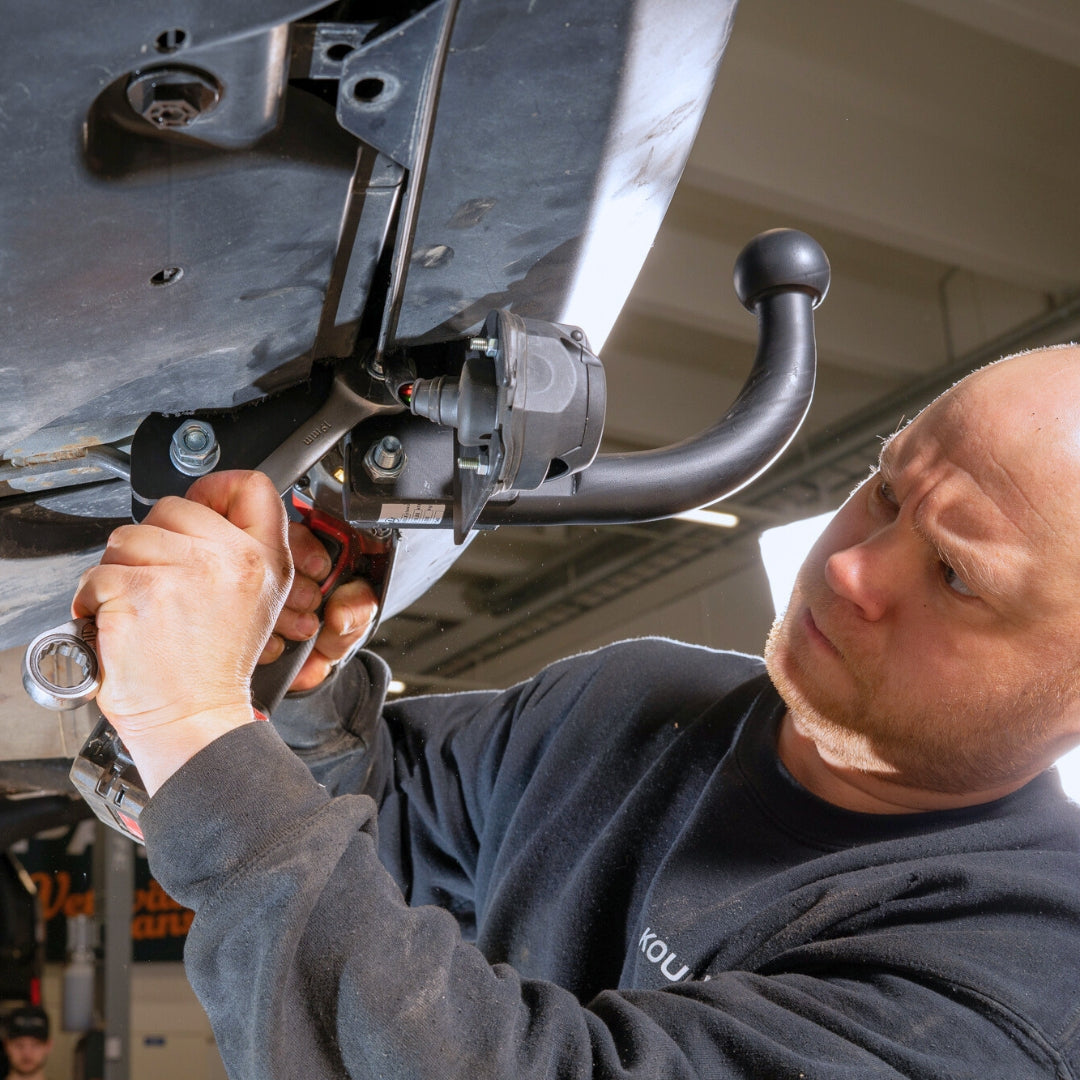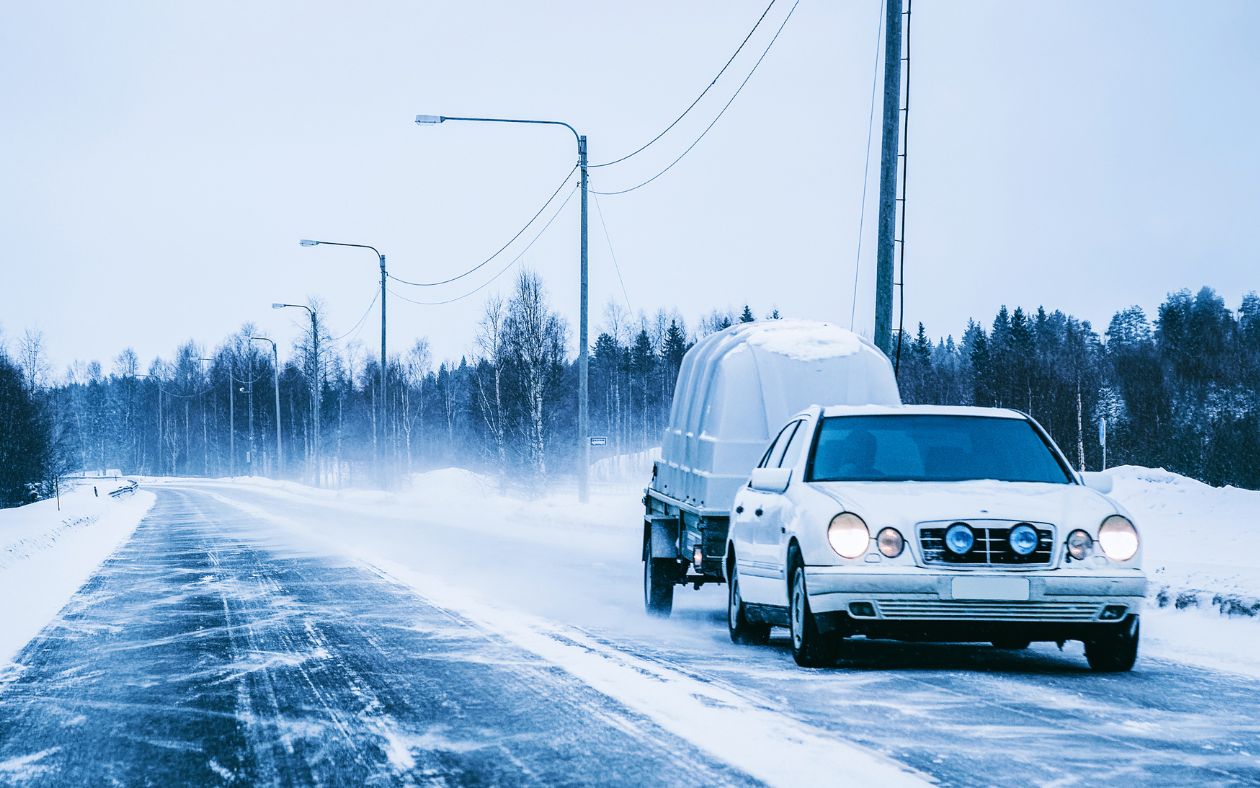A motorhome has almost everything you need – until you realize you also need to bring your bikes, barbecue, garden swing, and three bags of camping gear. At some point, many people find themselves standing behind their car wondering: should I have a towbar?
A towbar is not usually the first thing that comes to mind when planning motorhome equipment, but when space requirements surprise you (and they will), a towbar provides just enough flexibility to continue your journey without compromise. This article takes a closer look at what is required to install a tow bar on a motorhome and why purchasing one can be a smart move even before your belongings start spilling out of the doors.
Towbar on a caravan
A towbar increases the usability of a motorhome or caravan and can also increase its resale value. It can be used to tow a trailer or caravan, for example, allowing you to transport the equipment and vehicles you need on your trip, whether it's a snowmobile or a jet ski. The TowBox transport box is a handy solution for long caravan trips if the motorhome does not have enough space, and it can also serve as additional storage space on the road.
Caravans are often accompanied by smaller means of transport, such as bicycles. With a bike rack attached to the tow bar, mountain bikes and electric bikes can be transported safely on the trip. Thanks to its versatility, a tow bar is a very useful accessory that makes practical matters easier and travel more flexible.
However, before you rush out to buy the first towbar you come across, it is worth reading the following tips:
Vehicle specifications and towbar selection
When planning to purchase a towbar, first check your motorhome's registration certificate to see if installing a tow bar is permitted and how much load the vehicle is allowed to tow. When choosing a suitable tow bar, it is important to take into account the technical requirements set by the Vehicle Act – the tow bar must be E-type approved/vehicle-specific approved and correctly installed.
When choosing a towbar, it is worth considering your own needs, budget, and the technical characteristics of your vehicle. If you are unsure about choosing the right tow bar or have any questions on the subject, it is worth contacting the experts at Koukkupaja.
Towbar installation and electrical connections
The "do it yourself and save money" mentality can be costly when it comes to installing a towbar. towbars must be installed according to the manufacturer's instructions, so it is best to leave both the mechanical attachment and electrical work to a professional to avoid unnecessary costs and potential problems.
An electrical connection is essential, as trailer lights and indicators are required by law on all trailers, including those without brakes.
Two types of electrical connections can be installed on a motorhome:
- 7-pin plug – covers basic functions such as brake lights, turn signals, and license plate lights. Suitable for light trailers and small trailers.
- 13-pin plug – includes all of the above functions plus additional features such as a reversing light and a possible power supply for a caravan refrigerator or battery, for example.
Permissible towing weight
The towing capacity and permissible towing weights of a motorhome are governed by both the technical restrictions specified by the vehicle manufacturer and legislation. These restrictions are not arbitrary, but are based on the structural strength of the vehicle, its braking and driving stability, and the capacity of its engine and transmission.
Before connecting a trailer, it is important to ensure that the total mass of the motorhome, the drawbar weight, and the combined mass do not exceed the permitted limits. You can check the permitted towing weight in the vehicle registration document.
The combined mass of the motorhome and trailer also determines which driving license is required to drive the combination. A Class B driving license allows you to drive a vehicle combination with a total mass of up to 3,500 kg for the towing vehicle and up to 750 kg for the trailer. If the total mass of the trailer exceeds 750 kg, the combined mass may not exceed 3,500 kg without additional B96 training. If the combined mass exceeds these limits, a BE class driving license is required, which allows you to drive a combination where the total mass of the trailer may be up to 3,500 kg..
Koukkupaja – professionals at your service
Koukkupaja is Finland's largest specialist retailer of towbars, serving customers since 2009. We offer a five-year quality guarantee on our installations, so you can shop with us with complete peace of mind.
Our experts will help you choose the right towbar, and our installers will take care of the installation professionally and quickly. Feel free to contact us – we are here for you!






